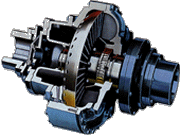 You may have already heard that Falk couplings are the solution to misalignment issues on the factory floor. Nobody wants to have mis-alignments, but it is not always possible to raise, lower or position equipment for that perfect shaft match-up. The correct Falk coupling will flex, pivot, rock or distort to accommodate misaligned shafts and keep your machinery running.
You may have already heard that Falk couplings are the solution to misalignment issues on the factory floor. Nobody wants to have mis-alignments, but it is not always possible to raise, lower or position equipment for that perfect shaft match-up. The correct Falk coupling will flex, pivot, rock or distort to accommodate misaligned shafts and keep your machinery running.
Whether you’ve faced this challenge or not, understanding the basic types of coupling mis-alignments is the first step toward finding the ideal fix. Misalignment simply means two axes do not align properly. In the case of Falk couplings, there are three main ways this condition occurs:
1. Parallel offset misalignment. When two shafts, or axes, are both on the same plane but still do not meet, this is referred to as a parallel offset. The two shafts run parallel, but one is either too high, too low, or too far to the right or left.
2. Angular offset misalignment. This condition occurs when two axes are at an angle to each other, but if a line were drawn from the middle of each one, they would meet at some point center to center.
3. Combination misalignment. This misalignment can be quite a challenge. Both axes are at an angle, but the center points do not meet in the middle. One may be higher, lower, to the left or right, and require a Falk coupling as a fix.
Whether you use a new or Falk surplus coupling, the misalignment must be fixed for optimum performance. These types of mis-alignments can cause excessive thrust loads if not properly addressed. Couplings need to connect these misaligned shafts in order to transmit torque and protect costly industrial equipment. Lost time is lost money, and connecting misaligned shafts properly will save both.
Posted under Machinery Maintenance on Thursday, September 1st, 2011
